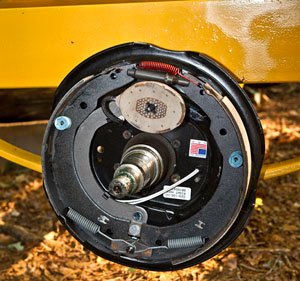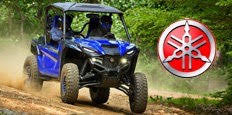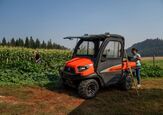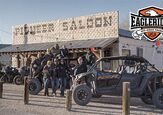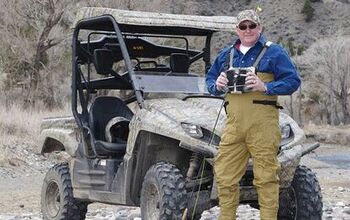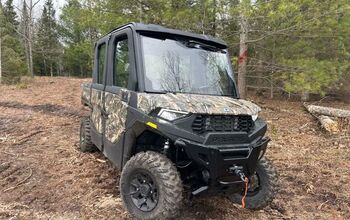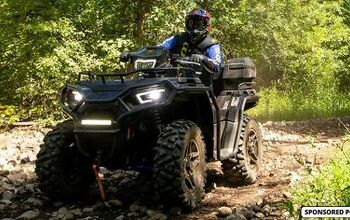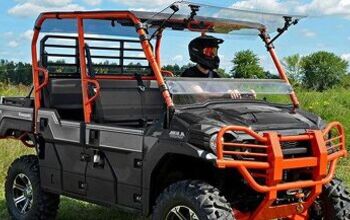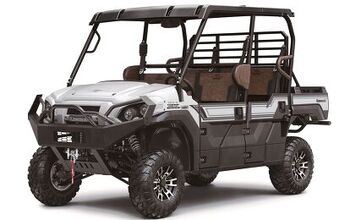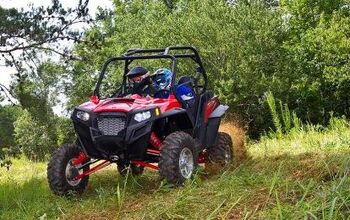How To Tow ATVs Safely and Securely
Keeping your ATV or UTV safe while towing it to the local ride area is something many people do not take enough time to prepare for. During recent trips along our highways we have seen more than our share of very unsafe towing habits as well as not so legal trailers. Most had their very expensive ATVs and UTVs barely hanging on to the trailer and some were not even tied down.
Just a quick note to get your attention; the weight of the machine will not keep it on the trailer should you have to switch lanes quickly or stop really fast. In this article we will discuss some options for securing your expensive ride to the trailer as well as some items the department of transportation might want you to have before hauling thousands of pounds in machines down the highway.
Here are a few suggestions that should help you keep your off-road machines secured to the trailer.
D-Rings: These very inexpensive steel rings add extra hook points on the trailer and can be welded or bolted onto the trailer if there is no other area to connect your strap too. The D-ring will also give you a hook point that keeps the strap from chafing against the steel sides of the trailer. Broken straps due to chaffing is very common.
Ratcheting Strap: To prevent heavier machines from becoming loose on the trailer, a large ratcheting strap is essential. Remember that the heavier the machine is the larger the strap you’ll need. Do not expect a tiny little one-inch wide strap by itself to be able to securely hold a 1400lb UTV in place. It’s just not safe.
Parking Brake: Engaging the parking brake on your ATV or UTV while secured to the trailer adds extra security and it couldn’t be easier.
Multiple Straps: Using two or three straps on each machine keeps the rig planted in its place while driving down the road. Crossing these straps from left to right and right to left ensures movement of the locked down vehicle is non-existent.
Before you load up your trailer and head for the trails you should inspect everything thoroughly and make sure it’s in proper working order. Below we provide a helpful checklist of things worth inspecting.
Trailer Brakes: In the state of Georgia it is a department of transportation requirement that any trailer, whether enclosed or open flatbed, that weighs over 3000 lbs must have trailer brakes. These brakes must be controlled either internally in the vehicle or via an onboard computer controller. Check the electrical system on the trailer regularly to ensure the trailer brakes are working properly.
Breakaway Chains: Having a heavy trailer means that you are always at risk that something could go wrong. Breakaway chains hooked to the tow vehicle via the tow hitch help make sure that the trailer is attached at two points to the vehicle. The chains should be crisscrossed to help keep the trailer straight and stable until the driver can pull over to re-secure the trailer.
Trailer Tires: Why would anyone take to the road with a trailer when the tires are bald? Your trailer tires need to be inspected for dry rot and any other imperfections that may cause a flat that could lead to an out of control vehicle.
Lighting: Unless your trailer is transparent you need bright, clearly visible lights on the back of the trailer and some states require clearance lights along the sides. Using a bright LED light is the new way to go and being sure the brake lights work is a must while traveling.
In most states there are legal requirements for hauling heavy loads down the road. Some DOT enforcement officers tend to overlook the obvious when they spot a passing truck and trailer loaded with fun machines. But if for some reason you do get pulled over you could be in for a huge pile of fines. Various tickets have been handed out for things such as improper lighting, no tag, no fire extinguisher and no trailer brakes. I even heard of a friend getting ticketed for a loose bail of pine straw in the bed of his truck because it was an insecure load. That DOT enforcement officer was clearly looking for a reason, but you never know if you might be next.
Did you know that if you haul a trailer with a combined truck/trailer weight of over 10,001 lbs it is illegal to use a radar detector if used in any commercial process? How about the fact that if you use the trailer for anything commercial (this means if you make money using the 10,001 lb trailer to haul items for profit) that you need a state medical card and possibly a DOT decal?
The Department of transportation laws are hardly understandable and can be very vague, but just to be safe I suggest reading up on what you haul and know the law. Remember that when hauling you need to keep yourself safe as well as the people around you.
No matter where you are in the U.S., you’ll be best served to make sure the trailer you’re towing is equipped with the following:
Taillights: The trailer needs operable taillights for basic road safety.
License Plate Light: Make sure to clearly display your license plate with its own light.
Safety Chains: These chains, which cross over in the shape of an X to connect the trailer to the towing vehicle, help prevent separation if the hitch connection fails.
Brake Lights: Your trailer isn’t transparent. The people behind you are already having enough trouble seeing around your trailer for stops ahead, so the trailer should have brake lights of its own to prevent a rear-end collision.
Clearance Lights: These might be required only if your trailer exceeds a certain width.
Turn Signals: If, for instance, your trailer blocks your vehicle’s signal lights, it’s good to have separate turn signal lights on the trailer.
Reflectors: These are an invaluable precaution to keep your large trailer visible.
Breakaway Brakes: Like safety chains, these prevent accidents when your hitch fails. These are power brakes that apply to the trailer upon separation from the tow vehicle.
Flares: Keep these at hand to clear off a section of the road after an accident.
Tie-Downs: If you are loading anything on a trailer that could possibly fall off, you’ll need tie-downs to secure it at multiple angles.
Related Reading
Whether he is in Mexico covering the Baja 1000, building ATVs for local racers, or out enjoying the trails, Rick’s passion shows in his stories. Learning to wrench his own machines from his grandfather, Rick also has an undying appreciation for the mechanics of off-road vehicles. Do not let the dirt and mud fool you, though, as Rick also has a deep love for street cars.
More by Rick Sosebee





